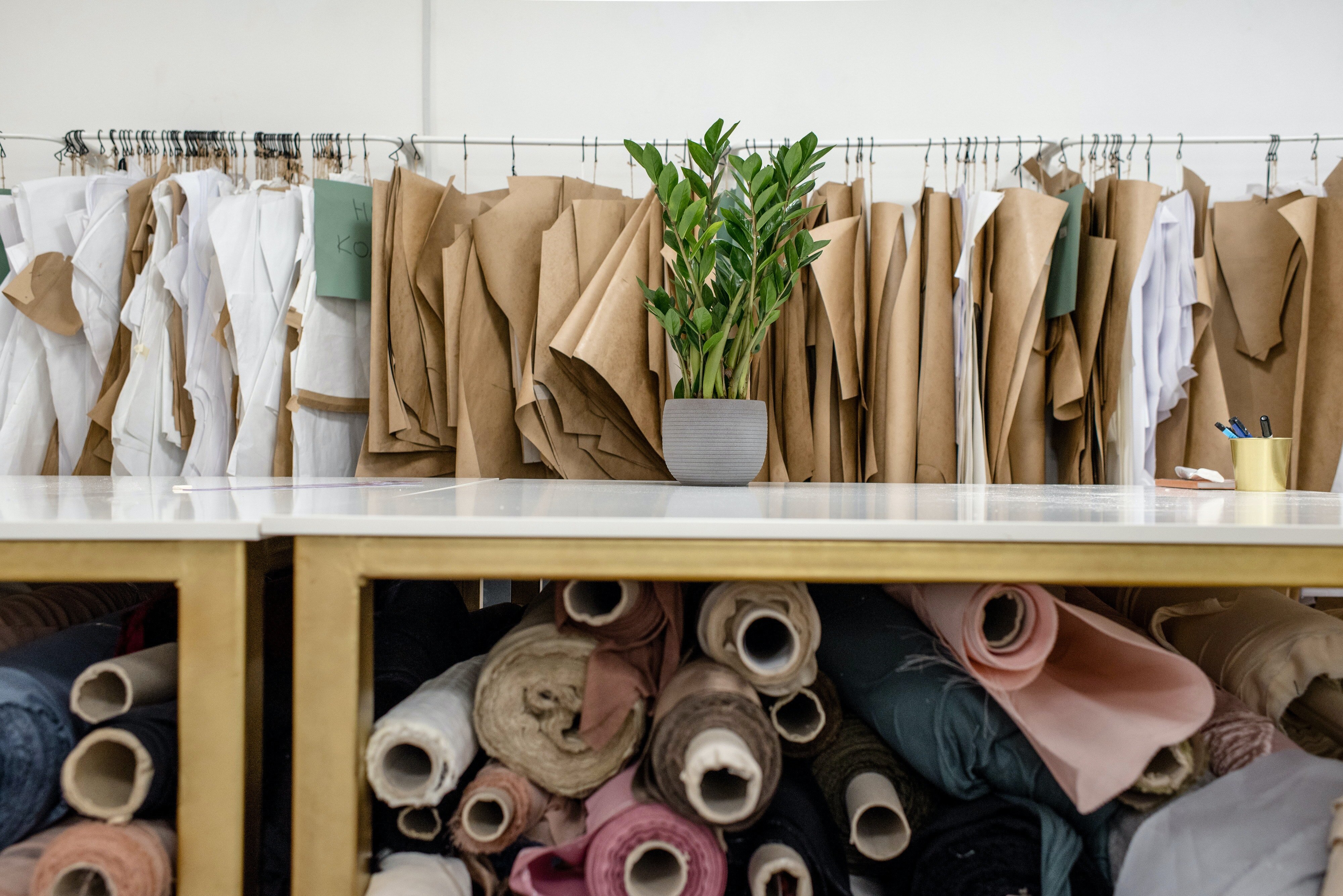Table of Contents
- Importance of a strong online fashion design portfolio
- Essential elements of a compelling fashion design portfolio
- How to create a winning fashion design portfolio
- Tips for showcasing your fashion portfolio online
- Building your fashion designer website portfolio
- Navigating digital fashion portfolios: dos and don'ts
- Networking and promoting your online fashion portfolio
- Conclusion: Elevating your career with an exceptional online fashion design portfolio

In the world of fashion, a designer's portfolio is their calling card. It is the tool that showcases their creativity, technical skills, and unique style. A well-curated and professionally designed portfolio can open doors to new opportunities and help elevate a designer's career.
With the rapid growth of technology and the internet, online fashion design portfolios have become increasingly popular and essential in the industry. These digital showcases allow designers to reach a broader audience, network with industry professionals, and stay up-to-date with current trends.
An online fashion design portfolio is a digital collection of a designer's work, including sketches, photographs, illustrations, and even multimedia content like videos or animations. It serves as a visual representation of a designer's skills, style, and vision.
The fashion industry is constantly changing. To succeed, designers need a strong online presence. A well-crafted portfolio is a key part of creating this presence.
Designers, both new and experienced, can benefit from this guide. It will help them create an impressive online fashion design portfolio.
This portfolio can help them grow their brand. This guide will help designers elevate their careers with a stunning online showcase. It covers essential elements and provides tips for showcasing work and networking.
Importance of a strong online fashion design portfolio
A strong online fashion design portfolio is an essential tool for designers in today's competitive fashion industry. This serves two purposes.
Firstly, it is a visual representation of a designer's skills and style. Secondly, it provides a platform to connect with potential clients, employers, and collaborators. Here are some reasons why having a well-designed and up-to-date online fashion design portfolio is crucial:
- Increased visibility: An online fashion design portfolio allows designers to showcase their work on a global scale, reaching a wider audience than traditional print portfolios. This increased visibility can lead to job opportunities, collaborations, and freelance work, ultimately helping designers grow their careers.
- Networking: Fashion portfolio websites often include social media integration, enabling designers to connect with industry professionals and like-minded individuals. These connections can lead to job opportunities, collaborations, and valuable feedback on their work.
- Professionalism: A well-designed online fashion design portfolio demonstrates a designer's commitment to their craft and attention to detail. It helps establish credibility and professionalism, signaling to potential clients and employers that they take their work seriously.
- Keeping up with the times: As the fashion industry becomes increasingly digital, a strong online presence is essential for staying relevant and competitive. An online fashion design portfolio helps designers stay current with industry trends and adapt to new technologies and platforms.
Essential elements of a compelling fashion design portfolio
A successful online fashion design portfolio should have three main components: It should showcase the designer's unique style and skills. It should be visually appealing. It should be easy to navigate. Here are some essential elements to consider when creating a compelling fashion design portfolio:
- High-quality images: Clear, high-resolution images are crucial for showcasing a designer's work. Ensure that all photographs, sketches, and illustrations are well-lit and professionally presented to showcase the designs in the best possible light.
- Variety of work: A diverse range of work demonstrates a designer's versatility and creativity. Include a mix of sketches, photographs, illustrations, and multimedia content to show the breadth of skills and styles.
- Organized layout: An easy-to-navigate layout is essential for a positive user experience. Organize the portfolio into sections or categories that make sense for the designer's work, such as by collection, season, or type of design.
- Personal branding: A strong personal brand sets a designer apart from the competition. Incorporate a consistent color scheme, logo, and typography throughout the portfolio to create a cohesive and professional look.
- About section: A brief, well-written bio gives viewers insight into the designer's background, experience, and design philosophy. This personal touch helps establish a connection with potential clients, employers, or collaborators.
- Contact information: Make it easy for viewers to get in touch by including clear contact information, such as an email address, phone number, and links to social media profiles.

How to create a winning fashion design portfolio
Creating a winning online fashion design portfolio requires careful planning, organization, and attention to detail. Here are some steps to follow when building a portfolio that showcases a designer's work in the best possible light:
- Define the purpose and target audience: Before beginning the portfolio-building process, it's essential to identify the portfolio's purpose and the target audience. Is the portfolio intended to attract freelance clients, secure a job, or showcase a specific collection? Knowing the intended audience will help guide decisions about content and layout.
- Gather and curate content: Collect a diverse range of work that showcases the designer's skills, style, and versatility. Be selective and choose only the strongest pieces to include in the portfolio.
- Organize the content: Arrange the content into logical sections or categories that make it easy for viewers to navigate and understand the designer's body of work.
- Design the layout: Create a visually appealing layout that showcases the work in a professional and engaging manner. Consider using a pre-made template from a portfolio website builder or working with a graphic designer to create a custom layout.
- Add personal branding elements: Incorporate personal branding elements, such as a logo, color scheme, and typography, to create a cohesive and professional look.
- Write an engaging bio: Craft a brief, well-written bio that provides insight into the designer's background, experience, and design philosophy.
- Include contact information: Make it easy for viewers to get in touch by including clear contact information and links to social media profiles.
Tips for showcasing your fashion portfolio online
Once a designer has created a compelling online fashion design portfolio, showcasing it effectively to attract potential clients, employers, and collaborators is essential. Here are some tips for promoting a fashion portfolio online:
- Optimize for search engines: Use relevant keywords and metadata to optimize the portfolio for search engines, increasing the chances of it being discovered by potential clients or employers.
- Maximize your reach on social media. Share your portfolio on Instagram, Pinterest, and LinkedIn. This will help you reach more people and connect with industry professionals.
- Participate in online communities: Engage with online fashion communities, forums, and blogs to share the portfolio, gain feedback, and connect with like-minded individuals.
- Network with industry professionals: Attend industry events, conferences, and workshops to network with fellow designers, potential clients, and industry influencers who can help promote the portfolio and open doors to new opportunities.
- Update regularly: Keep the portfolio fresh and relevant by regularly updating it with new work, accomplishments, and press mentions.
Building your fashion designer website portfolio
When it comes to building a fashion designer website portfolio, there are several platforms and tools available to help designers create a professional and visually appealing online showcase. Some popular options include:
- Portfolio website builders: Platforms like Wix, Squarespace, and Adobe Portfolio offer pre-made templates and easy-to-use tools for creating a custom online fashion design portfolio. Many of these platforms also include features like e-commerce integration, social media sharing, and analytics.
- Content management systems (CMS): For designers with more advanced web design skills, a CMS like WordPress or Joomla can provide greater flexibility and control over the portfolio's design and functionality.
- Online portfolio communities: Websites like Behance and Dribbble allow designers to create a profile and showcase their work alongside other creative professionals, providing a platform for networking and gaining exposure.

Navigating digital fashion portfolios: dos and don'ts
When creating and showcasing a digital fashion portfolio, it's essential to keep in mind some key dos and don'ts to ensure a professional and engaging online presence:
Do:
- Use high-quality images to showcase work in the best possible light.
- Organize the content in a logical and easy-to-navigate manner.
- Incorporate personal branding elements to create a cohesive and professional look.
- Update the portfolio regularly with new work and accomplishments.
- Promote the portfolio on social media and engage with online fashion communities.
Don't:
- Overload the portfolio with too much content. Be selective and showcase only the strongest work.
- Neglect to include contact information and links to social media profiles.
- Use low-quality images or cluttered layouts that detract from the work.
- Forget to optimize the portfolio for search engines and mobile devices.
- Neglect networking opportunities to promote the portfolio and connect with industry professionals.
Networking and promoting your online fashion portfolio
Networking and promoting an online fashion design portfolio can be crucial to a designer's success. Here are some strategies for effectively networking and promoting a portfolio:
- Attend industry events: Participate in fashion shows, conferences, and workshops to network with fellow designers, potential clients, and industry influencers.
- Leverage social media: Share the portfolio on social media platforms, such as Instagram, Pinterest, and LinkedIn, to reach a broader audience and network with industry professionals.
- Collaborate with other creatives: Partner with photographers, stylists, and other fashion professionals to create collaborative projects that showcase the designer's work and expand their network.
- Join online communities: Engage with online fashion communities, forums, and blogs to share the portfolio, gain feedback, and connect with like-minded individuals.
- Seek out press opportunities: Submit work to fashion publications, blogs, and websites to gain exposure and build credibility within the industry.
Conclusion: Elevating your career with an exceptional online fashion design portfolio
An exceptional online fashion design portfolio can be a powerful tool for elevating a designer's career. By showcasing their unique style, skills, and vision, designers can attract new opportunities and establish a strong online presence in the competitive fashion industry. By following the tips and strategies outlined in this guide, designers can create a stunning online showcase that sets them apart from the competition and helps them achieve their career goals.
Are you a fashion designer looking to showcase your unique style and elevate your career? Don't miss out on the opportunity to create a stunning online fashion design portfolio with Portfoliobox. Our user-friendly platform offers customizable templates, high-quality image galleries, and seamless integration with social media. Take advantage of our powerful tools to reach a global audience, connect with industry professionals, and stay ahead of the competition. Join Portfoliobox now and start building the portfolio that will set you apart in the fashion world!












